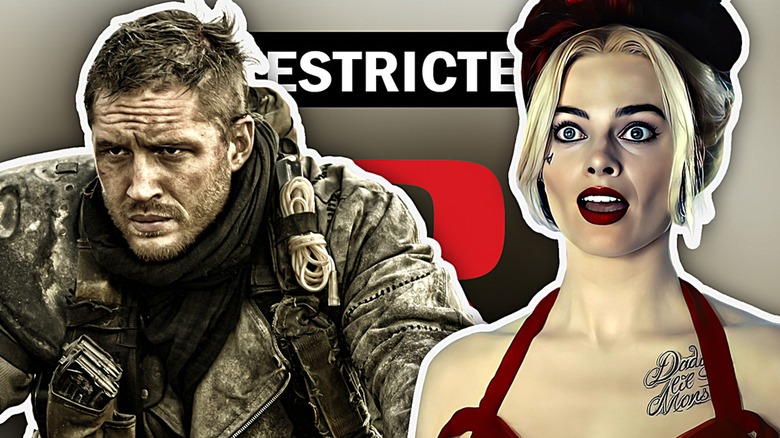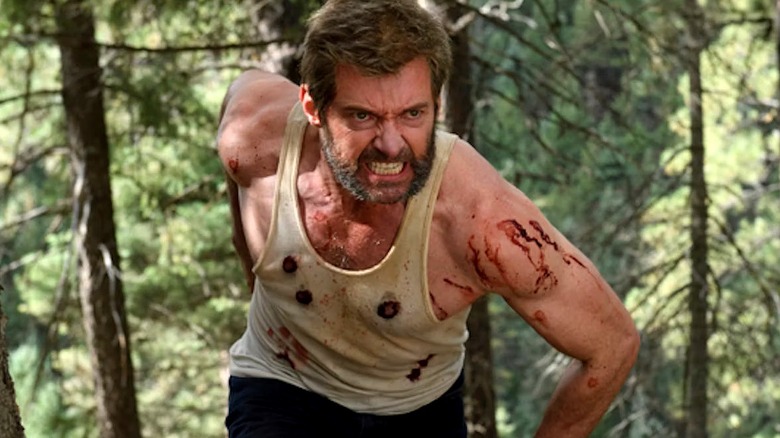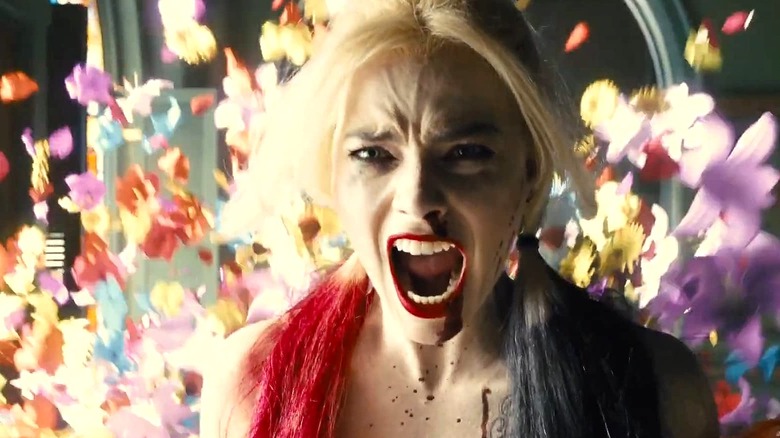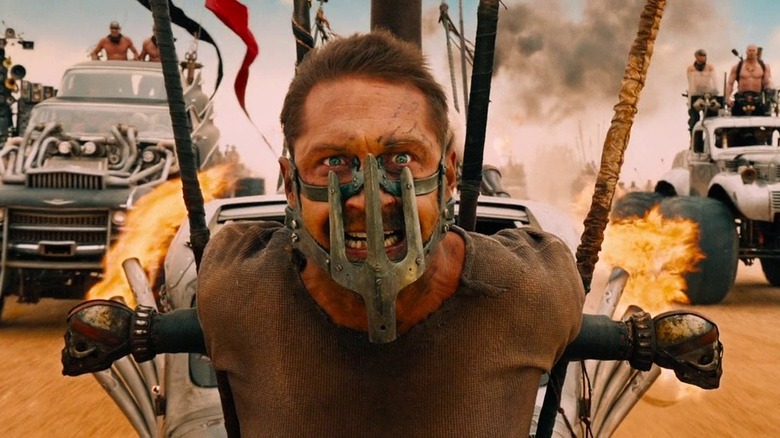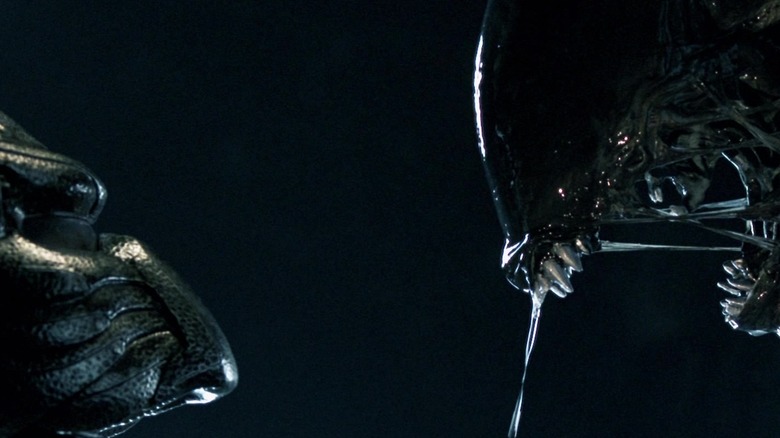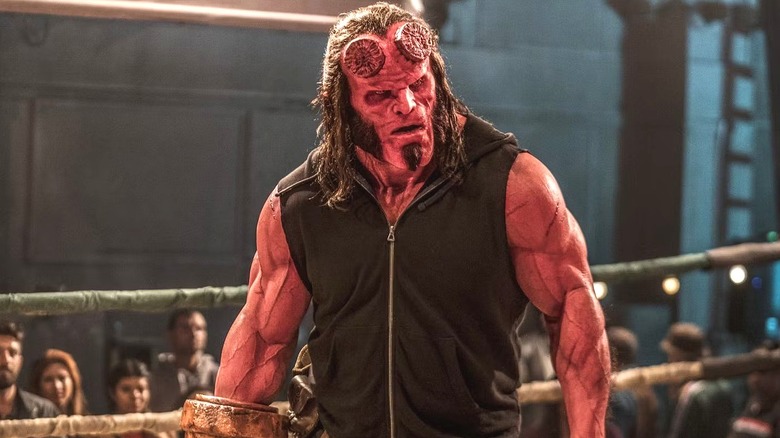PG-13 Movies That Got R-Rated Sequels (And Why They Changed)
When it comes to Hollywood execs, nothing terrifies them more than an R-rating. While audiences adore mature, adult-oriented projects that push the limits of a film's narrative, an R-rating can stall a film's box office run by cutting "family night" out of the equation. With an R-rating, a decent portion of the film-going audience, including teenagers, aren't allowed to be admitted unless accompanied by an adult. Because of this, Hollywood tends to target PG-13 ratings for most franchise fare, which is their bread and butter.
The proof is in the pudding: the ten highest-grossing films of all time, all of which are part of franchises (save for "Titanic"), have PG-13 ratings. The goal of franchises is to create as much wide appeal as possible without sacrificing profits — something an R-rating does. However, audience tastes have shifted, especially in the last decade. R-rated films have gained significant traction, with franchise fare like "Joker" and "Deadpool" emerging as massive successes, proving that franchises don't need to be held back by PG-13 ratings. In fact, most of the highest-grossing R-rated films of all time are part of franchises, confirming that, given the right project, brand recognition can trump wide appeal and accessibility.
In many cases, the biggest franchises to feature mature content started off with R-rated debut entries. However, there are a number of them that pivoted their creative direction by giving later installments an R-rating despite starting off as PG-13. In the case of superhero franchises, it's no longer unusual for the first film to start off with PG-13, with later entries taking a mature step up.
Logan was an R-rated triumph
In 2017, director James Mangold and Wolverine actor Hugh Jackman decided that the best way to wrap up the popular mutant's story was with the expletive-heavy, gory, and violent "Logan." The first film in the "X-Men" franchise to receive an R-rating, "Logan" proved to be a critical and commercial success, proving that audiences were eager to see superhero films with more mature themes and storytelling. Ending Wolverine's story on a somber, more mature note resulted in, arguably, one of the greatest comic book films of all time. In addition to a box office haul north of $610 million, the picture received a best adapted screenplay nod from the Oscars.
Making "Logan" with an R-rating in mind was a pivotal decision. The "X-Men" franchise had thrived for years, in part because of how widely accessible it was for teenagers and children. With Wolverine emerging as the franchise's marquee character, blocking a solid portion of his fanbase from seeing his final chapter was a major risk, so much so that Jackman even took a pay cut to ensure "Logan" could be rated R.
While speaking at the 2018 Writers Guild Association Beyond Words panel (via Cinema Blend), Mangold discussed how giving "Logan" an R-rating allowed him to make an adult drama that didn't have to fit into the corporate bubble of most superhero films. "It wasn't because of the violence and it wasn't because of the language, but because I didn't have to write a movie, and neither did my compatriots, for 11-year-olds," the director said. "If we had a rated-R movie there were gonna be no Happy Meals. There can be no action figures."
The Suicide Squad and Birds of Prey got R-ratings
While there are a number of R-rated movies that take things too far, most franchises that segue from PG-13 to R tend to keep things relatively mild, mainly playing up the language and violence factor like DC's "The Suicide Squad." Directed by James Gunn, the 2021 picture served as a sequel/reboot to the franchise that David Ayer established in 2016's "Suicide Squad." Seeing an opportunity to tell a more mature story, Gunn and DC realized that "The Suicide Squad" shouldn't be created for a teenage audience.
Gunning for an R-rating with "The Suicide Squad" was a no-brainer, as the film was influenced by a mature genre in the first place. "Those movies that it's somewhat based on, those 1970s war movies, those are hardcore movies," producer Peter Safran told Cinema Blend about the film's genesis. "So I think it's a lot of fun for James to be able to flex some of those muscles that (he) can't do on a PG-13 'Guardians [of the Galaxy'] movie. He's pretty hardcore with it." The success of older audience-skewing superhero pics like "Deadpool" and "Logan" might have also played into the DC film going after the R-rating.
"Birds of Prey (and the Fantabulous Emancipation of One Harley Quinn)," a sequel and Harley (Margot Robbie)-focused spin-off to 2016's "Suicide Squad," also received an R-rating. While speaking with Vulture, director Cathy Yan admitted that her DC team-up flick was never envisioned as a PG-13 project. And for Robbie, making "Birds of Prey" for adult eyes only was nothing short of liberating.
Mad Max took full advantage of its R-rating
George Miller's "Mad Max" franchise is interesting in that the franchise started off with R-rated entries, then briefly took a pitstop with a PG-13 offering. While both "Mad Max" and its sequel, "The Road Warrior," received mature ratings, when it came time for the threequel, "Beyond Thunderdome," Miller wanted a less-mean post-apocalyptic flick and released what he hoped would be a more wide-appealing PG-13 film. However, while it was less intense and violent than its predecessors, "Beyond Thunderdome" also stands out as the poorest-reviewed film in the franchise on Rotten Tomatoes.
When it came time to reboot the franchise with 2015's "Fury Road," Miller decided it was best to bring Max back to his R-rated roots. With a mature classification in his sights, Miller was able to ramp the intensity and violence up to 100, leading to one of the greatest action spectacles of all time. And then, while production on the epic was underway, Miller was mandated by Warner Bros. to deliver a lean 100-minute film with a PG-13 rating.
Refusing to compromise his vision, Miller came to the studio with two cuts: a trimmed-down PG-13 picture and an R-rated, two-hour odyssey. After testing both, Warner Bros. saw that the R-rated version of "Fury Road" performed better, compelling the studio to release the mature cut. Ultimately, "Fury Road" became a financial hit and a critical sensation, nabbing 10 Oscar nominations. The success of the action pic led to an R-rated prequel film titled "Furiosa" starring Anya Taylor-Joy, which unfortunately did not fare well at the box office.
Alien vs. Predator realized audiences wanted more gore
In 2004, 20th Century Studios (formerly 20th Century Fox) had the brilliant idea of uniting the "Alien" and "Predator" franchises in a single team-up flick. Simply titled "Alien vs. Predator," the film was a moderate success at the box office, grossing north of $172 million. Unfortunately, the cinematic crossover episode was a critical misfire, boasting a disastrous 22% on Rotten Tomatoes. One of the biggest criticisms the film received was how it was rated PG-13, which wasn't in line with either franchise's R-rated history.
Austin Chronicle critic Marc Slavov was particularly critical of this, writing in his 1-star review, "Much has been made in the fan press of the PG-13 rating attached to Anderson's film (it was apparently re-edited down from a hard R), and the film does indeed lack the sheer visceral brutality of either franchise's previous outings." An "unrated" version of the film would eventually be released on home video, a cut filled with gorier footage than movie theater audiences experienced. Some fans believe that the "unrated" version made the end product marginally better, but not by much.
In the end, though, the film was enough of a success to warrant a sequel in the form of 2007's "Alien Vs. Predator – Requiem." Unlike its predecessor, "Requiem" was slapped with an R-rating for "violence, gore, and language," making it in line with each respective franchise's previous offerings. Unfortunately, despite giving fans the more gruesome film they demanded, the sequel failed to make much of an impression, and it has a poor 12% critics score on Rotten Tomatoes.
The Hellboy reboot decided to go R
Just as comic book movies were becoming mainstream powerhouses, auteur Guillermo del Toro debuted "Hellboy" in 2004 to critical acclaim. The film, an adaptation of creator Mike Mignola's Dark Horse Comics series of the same name, became a favorite for both superhero fans and general audiences thanks to its moody atmosphere. Despite dealing with mature themes and satanic imagery, the pic managed to make cultural waves with a simple PG-13 rating. While it only grossed just shy of $100 million, "Hellboy" became a cult hit, compelling del Toro and Sony Pictures to release a sequel in 2008. Titled "Hellboy II: The Golden Army," the film was a moderate financial success, making some $160 million. Unfortunately, a threequel was never greenlit.
While lead star Ron Perlman refuses to give up on the possibility of "Hellboy 3," the creatives behind the franchise have been making significant efforts to reboot and retool the property. In 2019, David Harbour was roped in to star as the lead character in the first attempt at a reboot, this time featuring an R-rating. Unlike the del Toro films, Harbour's reboot dialed up the character's penchant for violence, gore, and strong language, making it a perfect flick for mature audiences. Unfortunately, a lot went wrong with "Hellboy" 2019, and the film was a commercial and critical failure. The next reboot, "Hellboy: The Crooked Man," is expected to follow in the previous film's footsteps and, though it hasn't been rated yet, was shot with the intention of receiving an R-rating as well.
